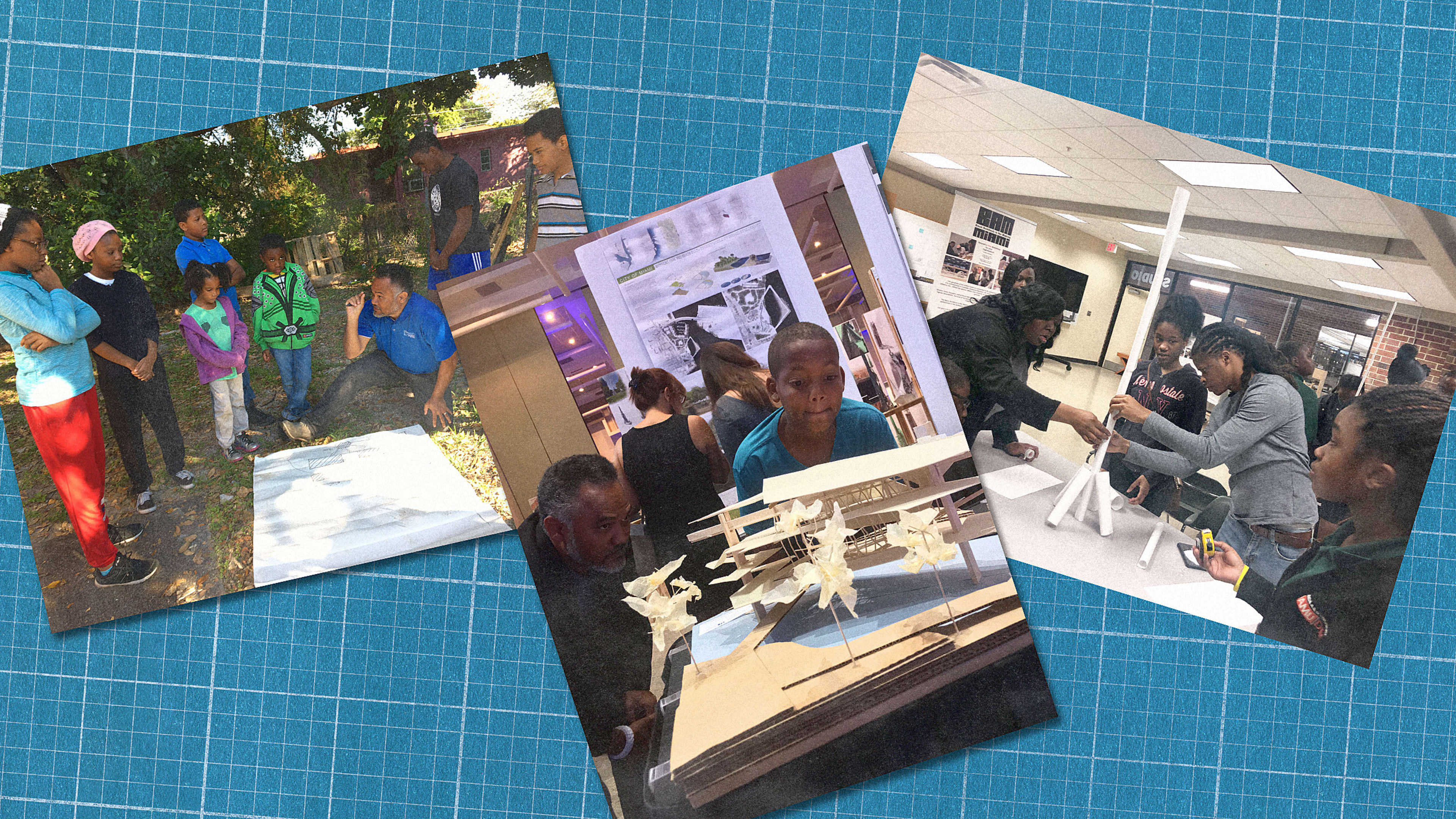There should be many more Black architects in the U.S. Based solely on Census figures, about 14% of the U.S. population identifies as Black, but in a profession of more than 122,000 registered architects, the number of Black architects is far from proportional.
“We would anticipate something in the region of 17,000 architects would identify as Black. In fact, we have less than 2,500,” says Craig Aquart, a principal at the Miami architectural firm, MC Harry Associates. That comes out to just about 2%.
This disparity is what led Aquart to help create Black Architects in the Making (BAM), a program aimed at bringing architectural exposure to Black students from elementary school to high school in the Miami region. Launched with the Miami Center for Architecture and Design, BAM’s mission is to dispatch architects to schools in predominantly Black communities to essentially be ambassadors for the profession. Since its founding in 2016, BAM has run programs with more than 600 Black students in the region.
“Oftentimes, they do not understand that there’s an actual person behind the shaping of the form of the spaces that they occupy,” Aquart says. Through workshops, sketching clubs, and tours of architectural offices, BAM aims to teach students from an early age that there are jobs and careers to be had in creating the buildings and spaces of daily life.
For instance, one of the first workshops BAM conducts with students is an overview of famous buildings, from the pyramids in Egypt and the Eiffel Tower in Paris to the Empire State Building in New York. “Students know more about architecture than they think,” Aquart says.
BAM builds on that with an exercise-based curriculum. Younger students learn the basics by hand drawing simple floor plans for houses. Older students move on to designing simple structures with 3D programs like SketchUp. One popular exercise is the construction of paper towers, in which teams collaborate to build tall structurally sound towers that are able to withstand earthquake-style table shaking. Rather than jumping into physics and equations, students try their hand at building and seeing what works.
When students are ready for college, BAM offers mentorships and scholarships to those who go on to pursue an architectural education. BAM also works from the other direction: reaching out to Black architecture students who are currently at universities in Florida and encouraging them to become ambassadors for the program during breaks from school or around graduation. “One way of proliferating the BAM program is to have the students take it back home with them,” he says.
Not every student in the BAM program will go on to work in architecture or engineering, but Aquart sees it as a numbers game. The shortage of Black architects requires a more proactive effort to fill the pipeline. Besides, the program is already working. One of BAM’s earliest participants went on to study architecture in college. He now works for Aquart’s firm. That’s one more Black architect the profession can count in its ranks.
Recognize your brand’s excellence by applying to this year’s Brands That Matter Awards before the early-rate deadline, May 3.
